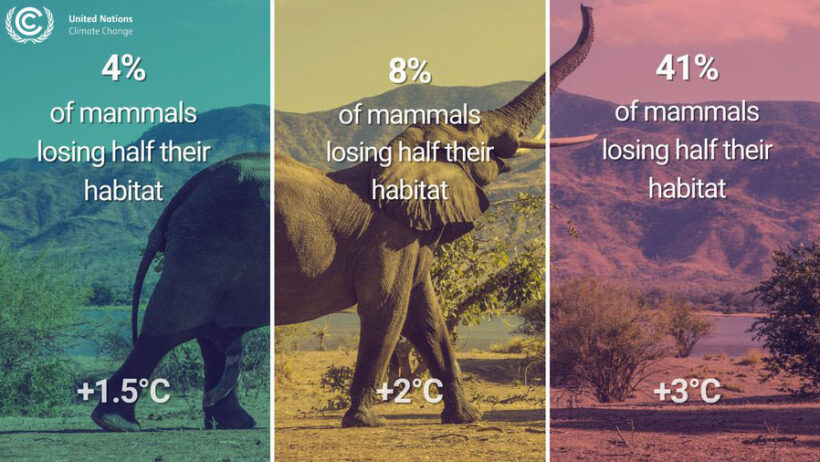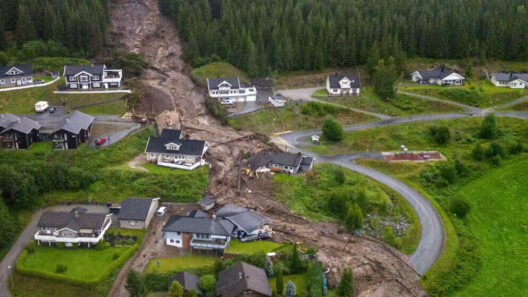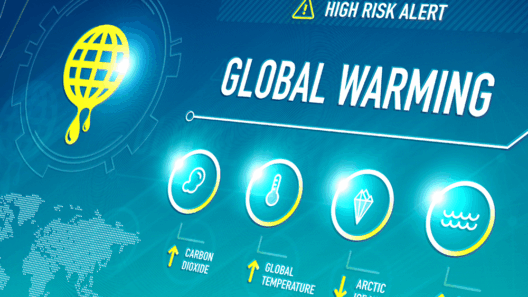Global warming, a pressing issue of our time, intricately intertwines with the lives of various animal species, prompting a profound exploration of how elevated temperatures affect their habitats, behaviors, and survival strategies. The observable phenomenon of climate change is not merely a human concern; it reverberates across ecosystems, altering the very fabric of life on Earth.
As temperatures rise, animals face relentless pressures that force them to adapt or perish. This dynamic not only captivates our curiosity but underscores the critical urgency of understanding the complexities of animal responses to a warming planet. There lies a deeper fascination in observing how creatures, from majestic mammals to minuscule insects, navigate the repercussions of climate change, often showcasing remarkable resilience and adaptability.
One of the most striking changes attributed to global warming is the shifting of animal migrations. Many species have evolved patterns that synchronize with seasonal changes, but as climates warm, these timings become misaligned. For instance, migratory birds that traditionally relied on seasonal cues may arrive at their breeding grounds before insects—their primary food source—are abundant. This incongruity threatens the reproductive success of these birds, illustrating a delicate balance disrupted by anthropogenic climate change.
Marine life also bears the brunt of warming temperatures. Coral reefs, often referred to as the “rainforests of the sea,” are under siege from rising ocean temperatures. Coral bleaching, a phenomenon that occurs when corals become stressed and expel the symbiotic algae living within their tissues, results in the loss of vibrant colors and critical habitat. This not only affects corals but also the multitude of species that rely on these ecosystems for shelter and sustenance. The collapse of coral reefs signifies a catastrophic loss of biodiversity and an essential food source for countless marine organisms.
Terrestrial habitats mirror this pattern of distress. As arctic regions warm, polar bears, emblematic of climate change’s impact, find themselves grappling with the disintegration of sea ice, their primary hunting ground. The resultant decline in seals—prey for polar bears—has stimulated a dramatic increase in mortality rates and reproductive failures among these magnificent mammals. Consequently, the plight of the polar bear serves as a poignant symbol of a larger narrative: the profound interconnectedness of life and how a shift in one domain can resonate throughout entire ecosystems.
Even smaller animals are not exempt from the pressures of a warming world. Changes in temperature have been documented to influence the physiology of insects, which are critical players in pollination and nutrient cycling. With warmer winters and hotter summers, the life cycles of these creatures may accelerate, leading to mismatches in timing with flowering plants, adversely affecting agricultural systems and natural ecosystems alike. As pollinators, insects such as bees play a vital role in food production; their decline signifies a cascading effect on global food security.
Adaptation strategies are pivotal as animals confront the myriad challenges posed by climate change. Some species exhibit behavioral plasticity, altering their feeding habits or breeding schedules to align more closely with environmental changes. Others might seek refuge in higher altitudes or latitudes, although such migrations are constrained by habitat availability and human encroachment. Yet, not all species can adapt swiftly enough to keep pace with the rapid changes induced by climate change.
The phenomenon of global warming also gives rise to the emergence of invasive species. As native habitats transform under climate stress, organisms that were once contained within specific geographical boundaries may expand their ranges. This can lead to fierce competition for resources, ultimately resulting in the decline or extinction of vulnerable native species. The role of invasive species, therefore, compounds the challenges already faced by endemic wildlife, as they vie for survival in an ever-altering landscape.
Moreover, the psychological implications of these changes extend beyond the biological realm. The profound connection humans share with animals catalyzes a growing awareness of our role in shaping the planet’s future. Watching animals adapt—or struggle to adapt—fuels a sense of urgency within conservation circles. The inherent fascination with these creatures and their ability to survive amid changing circumstances often spurs activism and educational initiatives, emphasizing the importance of protecting natural habitats and mitigating climate change.
As stewards of the Earth, it is incumbent upon us to recognize the agency of these creatures. They are not merely passive recipients of environmental changes but active participants in a dance as old as life itself. While their responses to global warming may captivate our interest, they also serve as a clarion call for immediate action. Understanding their struggles provides us invaluable insights into the broader environmental challenges we collectively face.
In summary, the intricate tapestry of animal life is being significantly reshaped by the consequences of global warming. The myriad ways that animals are responding to these changes—from altered migration patterns to shifts in reproductive cycles—illustrate the urgency of climate action. By examining these phenomena closely, we glean not only a sense of wonder at the intricacy of life but also a profound responsibility to ensure a future where both humanity and the vibrant animal world continue to thrive. The beauty of the natural world, with its myriad species, depends on our commitment to mitigating climate change and fostering resilience in the face of an uncertain future.








